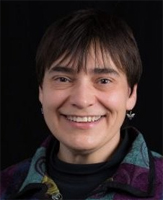Biopharma Require Close Relationships And Recruiting At CDMOs

By Louis Garguilo, Chief Editor, Outsourced Pharma

Solid Biosciences of Cambridge, Mass, took three steps to ensure supply would not be “a barrier to delivering for patients.”
The gene-therapy company’s target disease is Duchenne muscular dystrophy; any delay of an approved therapy could be catastrophic to those patients.
The three specific steps Solid Biosciences took to ensure lead candidate SGT-001, currently in a Phase 1/2 trial, and other candidates in the pipeline, have a sturdy supply:
- Recruited a highly specialized team of manufacturing/process development experts
- Built a state-of-the-art process development and characterization lab
- Partnered with leading CDMOs
Louise M. Perry, SVP, Technical Operations, and I spoke in particular about that third component.
Definition Of Close

Today she’s focusing on development of SGT-001, a gene-transfer program enabling the systemic delivery to muscles of a smaller but functional version of the dystrophin gene, called microdystrophin.
With the intended meaning of geographically, I ask Perry if particularly for advanced-therapy organizations like hers, there’s a need to be close to external partners.
Soft-spoken but obviously passionate, Perry begins by agreeing proximity is desirable, although she understands some organizations don’t mind traveling distances to a CDMO, if it’s the right fit for the company, the drug or therapy, and ultimately patients.
COVID, though, curtailed visits to partners both near and far – a geographic equalizer. And so instead of location, “the closeness of the relationship” has had to carry the day to continued outsourcing success.
“The pandemic reinforced how a tight relationship is important,” she says. “With our approach, we do a lot of the development work internally, and understand our process before we transfer it to the CDMO. During production of a GMP batch at the CDMO, normally we are there on the production floor, able to immediately address questions and ensure we can assist if something does go awry.”
What went awry was the pandemic.
And close relationships aside, the ballyhooed Zoom calls, as helpful as they were and continue to be, cannot replace physical presence. Even, says Perry, for receiving updates on what’s really going on at the external partner’s facility.
“Tight communication” with a CDMO for Perry includes spending as much time there as you can – in production, but also leading up to production.
“So for us, location is in fact a big deal,” she says
A nonstop flight and quick drive to a facility greatly improves how much and the quality of time she and her staff have at a CDMO. For tech transfer specifically, it eases the back-and-forth that’s often required.
She uses analytical assays as example. These, she says, “can be tricky, especially cell-based assays.” Having them fully understood, properly conducted and analyzed, when relying mainly on documents and virtual communication, is less than ideal.
However, if the sponsor is onsite, “you can look through a microscope together.”
“You can say, yes, those are the cells we’re looking for. And you can have that person-to-person interaction. It absolutely improves the ability to have an assay that correctly works every time.”
Perry concludes here by saying she doesn’t want to suggest your CDMO absolutely has to be in a relatively close-by “travel hub,” but at least location where companies like hers can get to easily.
Close relationships and distances, we might say.
And there’s one more point of easy access that’s required: to a talent pool.
Recruiting Requirements
Without that talent pool, says Perry, “it’s near impossible for sustained growth – both in numbers of workers and skillsets. This precipitates an overreliance on constant worker training just to keep up with the developing science and new customer programs.”
“And right now,” she says, “we're in an unprecedented time, where the competition for talented, biopharma-background folks is huge.”
Filling roles at both sponsors and service providers is difficult – even in a hub like Cambridge, where there may be a larger talent pool, but also more companies looking for staff.
“If you’ve selected a CDMO located where there isn't a talent pool, as you grow and your needs advance – and the CDMO gets more clients – how are they going to pull in enough trained people? Particularly those ready to go or who can come up to speed quickly?”
Great questions. I have my own:
Does a client like Solid Biosciences get involved in that process and planning at a CDMO? Does Perry specifically discuss future needs for skilled workers there?
“Right at the beginning,” she replies. Here’s a range of questions she puts to CDMOs:
- How many people do you have now? What are their skillsets?
- What does your leadership team look like?
- What's your goal for recruiting the number of people who will be running all of this capacity you're talking to me about?
- What’s the specific, ongoing hiring and training programs and plans?
How do these CDMOs tend to reply to these questions?
Recruitment and training plans at service providers, she says, often include working directly with nearby universities to graduate and train more biopharma workers.
“A lot of folks also work with – and I think this is a really smart thing to do – community colleges, those that have or can install specific programs in biotechnology.”
She says you may need highly skilled and trained workers in process development, quality control and analytical development, but:
“CDMOs really hang their hat on output – operating efficient GMP manufacturing facilities. The reality is a majority of manufacturing staff can be very successful without an advanced degree.
“You're looking for those with maybe a tailored bachelor's degree, even somebody who is high-school educated and been through a biotechnology certificate program, who has learned GMPs.”
She adds: “You need shift workers. This potential pool at community colleges and community-based programs can help get future workers ready to support the GMP environment. I’ve seen folks partnering in their community in these ways. I think this is effective; it can bring in the staff CDMOs need.”
We'll continue our conversation with Perry next time ...
